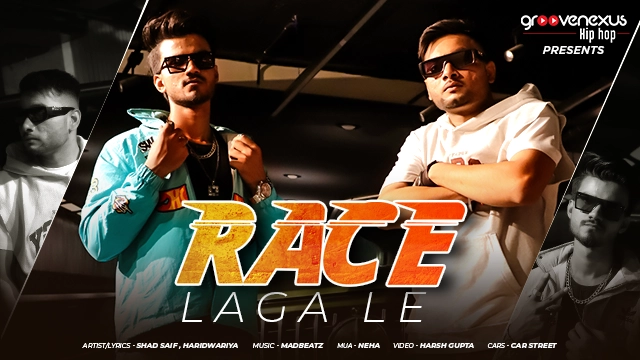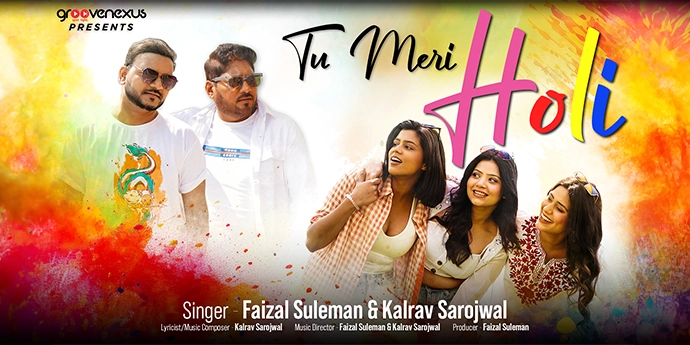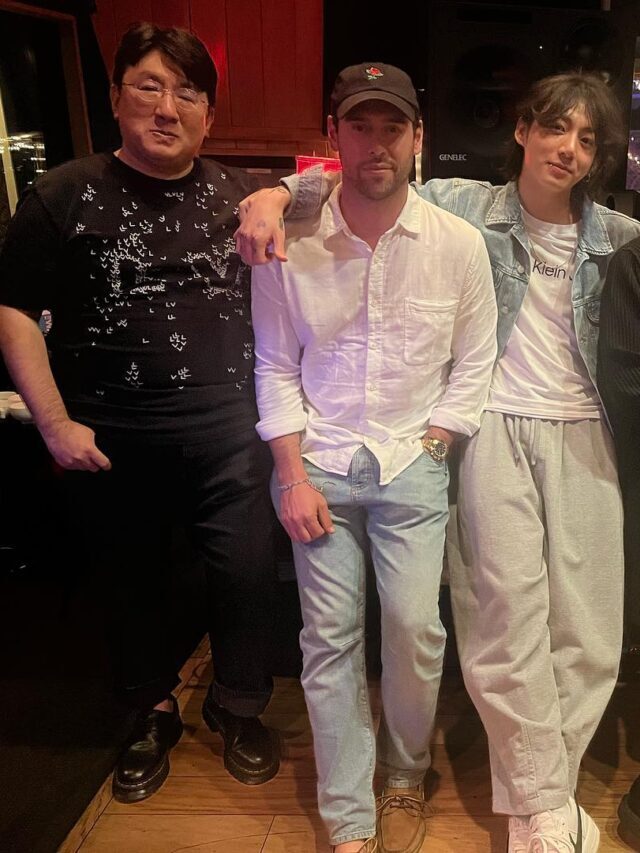Introduction
The Spitfire Audio is popular for making excellent instruments. Their constantly growing catalog of flawless orchestral samples and prolonged instrumental techniques are obtained from the best UK players and recorded by audio engineers operating at the highest art form levels. Labs Spitfire audio is a series of free software instruments. Labs Spitfire audio is a dedicated, free-to-use plugin available as VST2, VST3, AAX, and AU so that it can be used directly in your best DAW for music production.
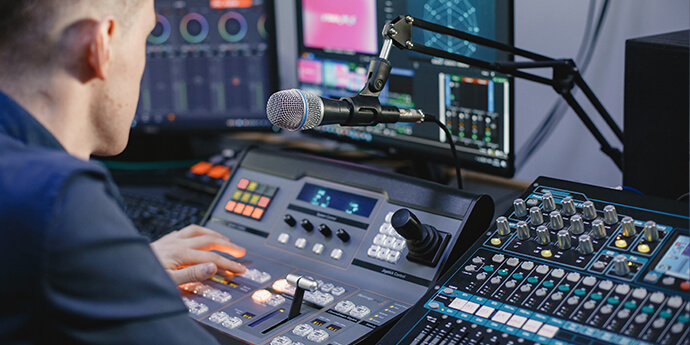
Spitfire audio collaborates with many famous orchestras, composers, soloists, and chamber groups to produce a unique collection of playable sounds primed by various contemporary aesthetics and styles and textures of different music.
Over the last 12 years, 60 libraries have been created in Spitfire audio instruments, and it continues to create more wonderful virtual instruments as the demand grows. Therefore, we have curated a list of our personal favorites from the catalog of Spitfire.
They can be classified into three categories:
- Kontakt-Based
- Plugins
- Free
Kontakt-Based Libraries
Kontakt- Based is the best spitfire audio library s and has a similar graphic interface, making it easier to switch instruments hassle-free due to the similarities in signal path and control systems. If you can master any one of the libraries, you can quickly figure out how other libraries work.
Orchestral/Chamber Libraries
I) London Contemporary Orchestra Strings
These Spitfire strings brag about their never before techniques and sampled articulations such as granular to ordinary transitions, irregular tremolo, spectral scrubs, woozy vibrato, scrapes, detuned open string effect twitchy FX. If you want to create FX-based underscore and textures, then this collection is for you. Articulations can also be layered by shift-clicking to select multiple settings, enabling many different combinations and possibilities. Apart from this, standard articulations are available too.
The Ostinatum section enables the creation of rhythmic ideas and arpeggios where can save eight or fewer patterns. Articulations can be key-switchable and can load samples selectively to save RAM. The UACC specification developed by Spitfire audio desires to achieve consistent CC32 values across instruments for articulation in their catalog. When the automating values change in CC32 in your DAW (Digital Audio Workstation), the articulations will change accordingly. This enables access to many FX and articulations without the use of any keys on the MIDI controller. And similar articulations can be kept when switching between different instrumental libraries.
Round-robin settings have said to improve realism with the addition of variations to events that are similar. A few modes can use up to 8 samples for a given note and include ‘Neighboring Zones’, which can produce 24 distinct sounding notes when you press a key.
Specialized articulations and textured effects are what makes the LCO collection attractive in particular.
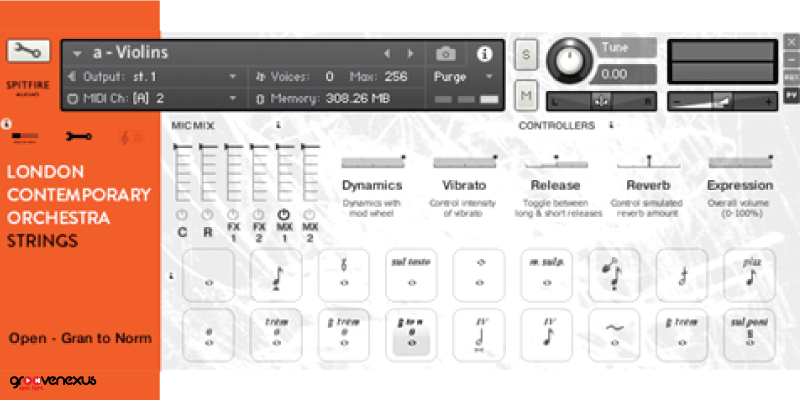
II) Chamber Strings
The chamber strings library was compiled from 16-piece string ensemble recordings and provide a more defined sound with better control without losing the spacious feel of The Hall at Air Studios, London.
The layout and interface are similar to other Spitfire audio instruments with features like mic mixing, stereo spread, round-robin settings, and ostinatum.
The focus is on the detail in this string as opposed to epic string masses. You can also achieve superior results while keeping a big sense of space. The close and far positioning of mic can experiment with the easy mix mic settings and the parameter for tightness enables for a better control over short notes.
This string is best suited for small groupings of string and a detailed sound.
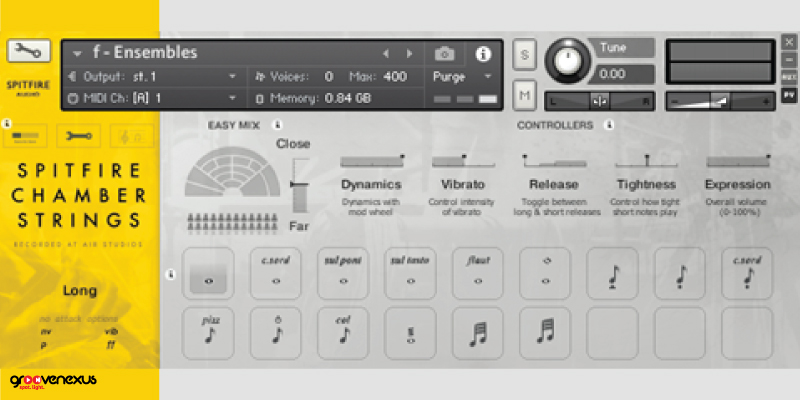
III) Studio Orchestra Series
The Studio Series consists of Strings, Spitfire symphonic brass and Woodwinds component libraries which can be bought individually or in bundles. These libraries are called dry stage libraries, which are created to facilitate more reverberate sound of rest of the Spitfire audio orchestral offerings. These Spitfire audio choir sounds give a solid foundation to experiment with different effect chains and custom reverbs. You will receive a complete collection of wind and brass instruments in individual and multiple configurations and many options for string sections. Some great extended technique additions are present along with all the standard articulations like air in the wind library and key noise and wonderful swell gesture.
Do not expect any preconfigured ensembles or posh concert hall ambience when you initially launch these libraries. You will have to set it up according to the demand of the project, but you can have immense control over your outcomes if you start with these pristine samples.
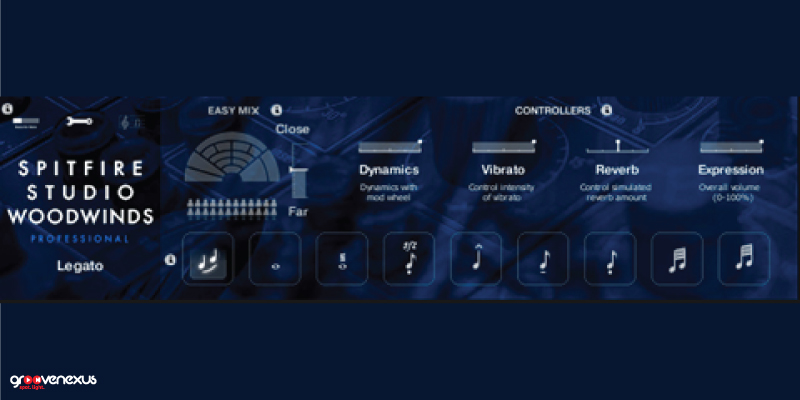
IV) Symphonic Brass
This is a complete collection of powerful brass sounds, including singles, a2, and a6 combinations. It has all the standard brass articulation and rips, falls, long flutters, glissandi, and a mariachi vibrato that are downright genuine. The familiar Spitfire palette of controls will quickly get you started as you compile custom instrumental configurations based on your needs. Research the depths of hell with the Contrabass Tuba going down in MIDI Note C-0.
It is a solid and versatile foundation for all your brass needs, capable of doing everything from solo and chamber groups to rich symphonic sounds. You will be impressed.
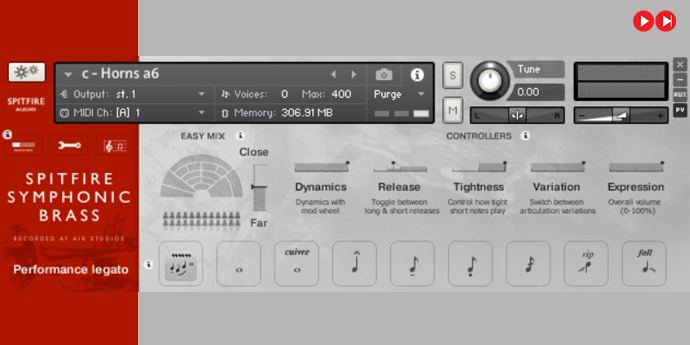
V) Solo Strings
While most string libraries come with solo instrument options, this collection is dedicated to the string soloist, with over 40k samples available from the familiar GUI. A set of articulations includes specific techniques and cole Legno, col tratto (omitted from wood), brushed boing con sord, super sul tasto, a gracefully long progressive vibrato that emerges over time, among other unique influences.
These instruments are highly playable and feel satisfyingly responsive. They are bending breaks up long continuous lines with a change in direction, as in the case of a live player. The velocity sensitivity and depth of these samples are astonishing. For example, staccato articulation in the cello goes from being light and delicate at low velocities to a heavy, almost scratchy tone at high speeds – very realistic.
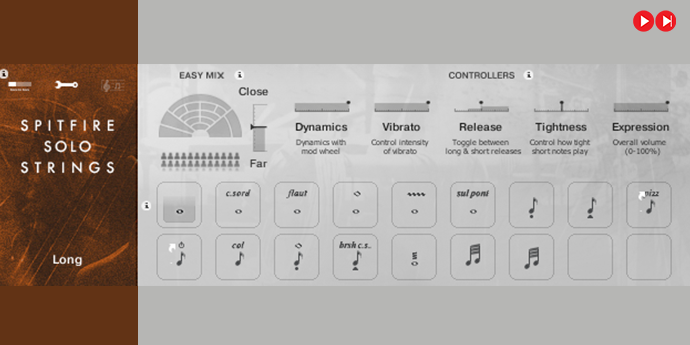
Composer-Inspired Toolkits
These libraries were created by collaborating with various composers, and thus, they consist of a large variety of content, textures, timbres, and techniques that differ from other contemporary collections.
I) British Drama Toolkit
Based on a woodwind and a small string section, these samples are recorded in a dry stage. In collaboration with composer Samuel Sim is the best Spitfire library’s interface is different from previously discussed instruments so far. Velocity has a significant role to play as a spectrum ranging from textural to soft to loud can be navigated solely by the event’s velocity. Change in the loudness and timbre is not the only thing, choices in orchestration can also be integrated in the continuum of the ensemble instruments. An individual note at a considerably low velocity that will sound like air blown via a wind instrument can miraculously change into a different wind sound at a higher velocity with the addition of string as it gets louder. The sonorities that sustained swell naturally and expressively. Long Chatter and Long Chiffs are some unusual techniques that are reminiscent of the aleatoric looping structures in Witold Lutoslawski music.
This particular library has a “sound” that is probably just the correct sound you will need if you have a nearing deadline.
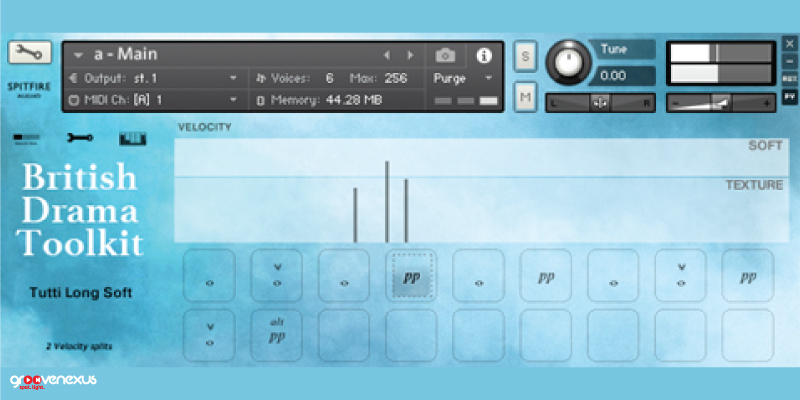
II) Hauschka Composer Toolkit
Created in collaboration with composer Volker Bertelmann aka Hauschka, this library is based on a collection of prepared piano samples. This included placing different objects like nuts, bolts, and screws on different piano strings to inhibit or modify the natural string vibration. Creating percussive and noise-based sounds is also removed from a piano’s sound. Effects like ping-pong ball effect, gaffer tape, wood mutes, fingernail plucks, analog and digital effects processing, mic mixes and modulations available through 3 different GUIs.
The simple and expert views will be familiar to that of Spitfire audio users alongside controls of mic and effects mixing, ostinatum, expression and dynamics.
The Grid, also known as pegboard, consists of an array of toggles that enables its users to change a sound relative to a particular pitch. ADSR controls, signal level sliders, and effect parameter controls have randomization options. As stated in the manual, the sound you can find in the grid is somewhat long and varies with time because they keep evolving, changing, mutating, and finally coming back to their original state before looping. Each sound is recorded at a tempo that is different from one another purposefully so that when you choose different pegs on the grid and play them with one another, they will undulate against each other.
The Mercury Synth interface is mainly used for warped sounds and consists of three LFOs, HP and LP filters, different digital effects and an assignable XY controller called YOKE.
This is the perfect library for producing different, unusual and evolving textures and complex rhythmic content.

III) Hans Professional Percussion
This is yet another collaboration with a composer, Zimmer, which enables its users to access the iconic percussive sounds that we hear in many films. Many world instruments exist in this collaboration and many traditional and contemporary classical tools with a range of playing techniques such as scrapes, chokes, rolls, flams, taps and hand hits etc. The main interface is used to gain access for mapping, and the special timpani interface is used to tweak those sounds. Many presets are there in the library that mainly focus on a few elements required to lessen the loading time.
These samples are unique with various exotic percussions and playing techniques that make this library a significant one for anybody who needs these iconic cinematic percussive sounds.
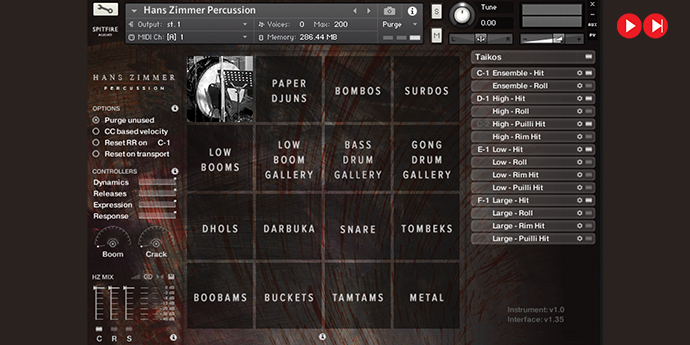
IV) Hans Zimmer Piano
One more piano-based instrument is the Hans Zimmer piano, which takes a different approach. Over 60 microphones were used with the Neve 88R in Air Studios. The main focus is on the beauty of the piano’s acoustic potential instead of effects processing. Piano samples are designed and created by activating vibration with various stimulators such as mallets, nails, sticks, etc. The soft piano and mute patch are stunning and playable. Although the Full and Bright Patch interfaces are same to other Spitfire instruments, the central scene is different in layout but with three easy-tweak controls for adjusting pitch (up or down three octaves), boom (LP filter cut-off) for the user.
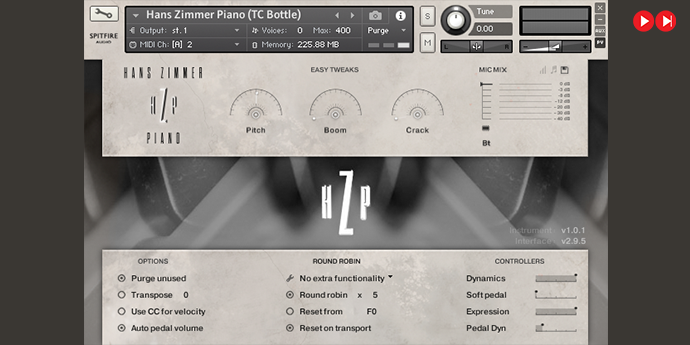
V) Kepler Orchestra
The instrument is inspired by system music that emerged in the 60s by minimalist musicians such as Steve Reich, Philip Glass, and Terry Riley. Using the EVO Grid interface, you can quickly generate complex and stimulating rhythmic content that paradoxically creates a sense of tempo and stops all at once. I highly recommend listening to Reich’s seminal work, Music for 18 Composers, and Terry Riley’s in C if you’re new to this creative approach.
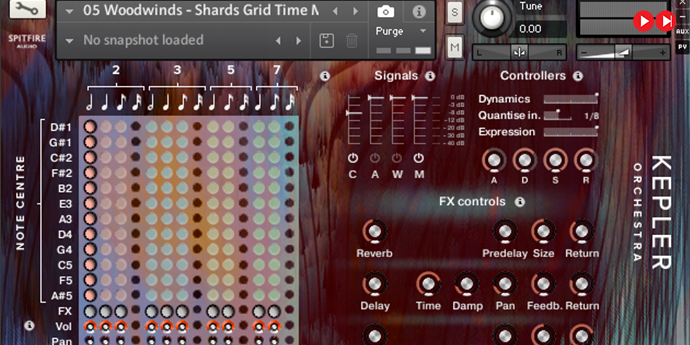
6) Olafur Arnalds Stratus
Spitfire Audio’s newly released library, called the Olafur Arnolds Stratus billed as Piano, has been recreated. The eponymous library results from Spitfire Audio’s collaboration with Icelandic composer and producer, known for his work on numerous films, television shows, and musicals.
The standard premise behind this collection is using two self-playing pianos that Arnolds acquired to solve his lack of skill after an automobile accident in which he suffered a spinal cord injury.
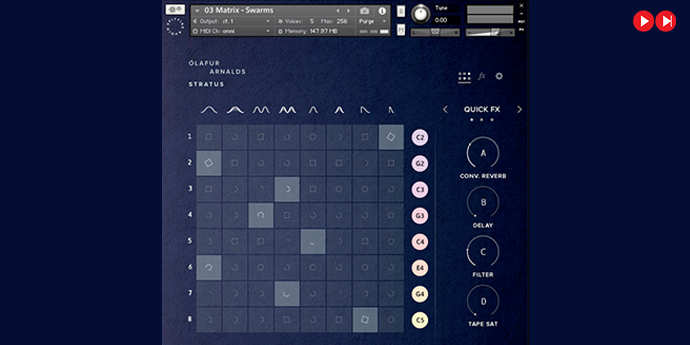
Sound Design and Special FX
I) Spitfire Ambient Guitars
The main feature of the spitfire ambient guitar is that it is clearly oriented towards sound design, evolving soundscapes, and lush ambient pads. It consists of different interfaces having the EVO grid with an option for randomization that allows the layering of unique and different sound combinations with just one click. It consumed a lot of time to look for the possibilities of various patch categories, including- inspiration, distorted, enigmatic pads, arps and chords, odd loopers and others. This is instrument is a deep instrument with an abundance of effects in modulation and processing, a gate sequencer, and the ability to crossfade between the two oscillators.
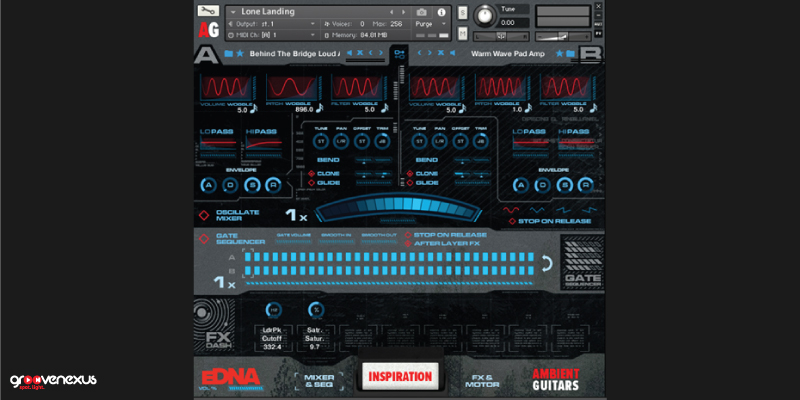
II) Sound Dust
Sound Dust is the best Spitfire library includes two volumes of strange sounds and instruments produced in collaboration with composer and sound designer Pendle Poucher. It consists of five different interfaces that can access a large variety of sounds.
The flutter dust instrument has a wavetable and a looper view where the playback cursor jumps around a pre-existing sound file having a granular approach to sound design. The infundibulum is an instrument that has three independent 64 step sequencers which can astound rhythmic complexity. The oddhop instrument constitutes of three different views and is an enormously powerful drum machine-like device. The pendleonium instrument enables six heavily processed and layered string instruments. The ships piano instrument combines three different sampled pianos and a range of effects including the clever step sequencer: The Satie-anator.
It is one of the most addictive instruments that is also really fun.
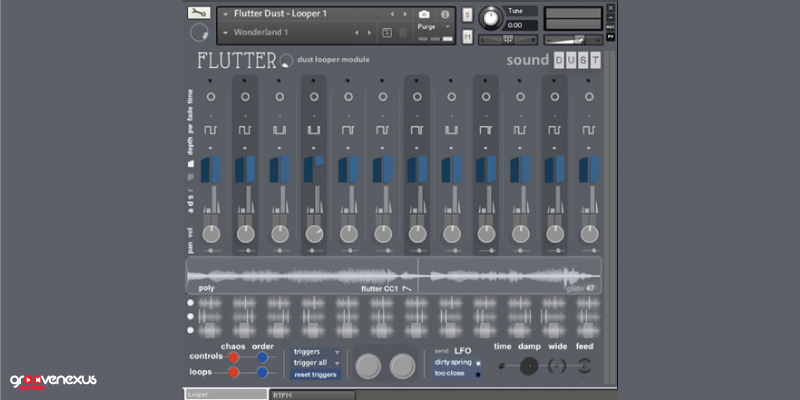
Plugins
I) Hans Zimmer Strings
In this plugin, the collaboration with Hans is continued with Spitfire Audio showing an instrument capable of acing epic string sections that drip with cinematic textures. Articulations consist of standard fare and things like col legno tratto and a few other special effects gestures like chatter and cluster slides. The interface is clean and elegant, having quick access to articulations, mic mixes and controls like tightness, vibrato, release, and reverb. The sections sound massive, having up to 60 violins, 20 violas, 60 cellos and 24 basses.
It is a great instrument for lush and wet string textures and the interface makes it easier to enable the sound you need quickly with a drop-down menu.
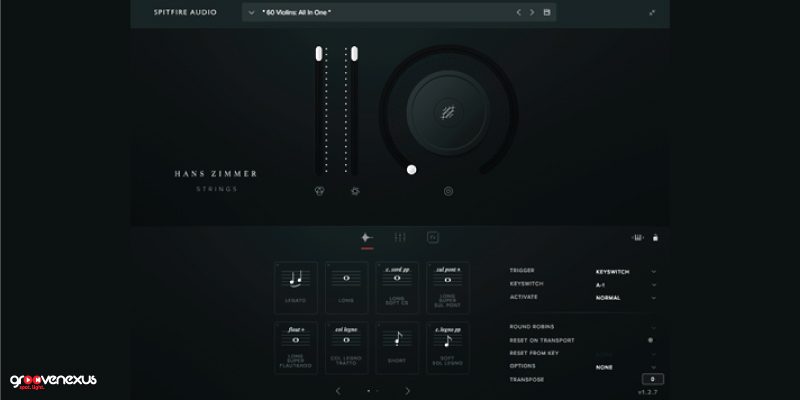
II) Angular String Evolutions, Fragile String Evolutions, and Woodwind Evolutions
All these three instruments share a common interface that features the EVO grid. The grid enables access to an immense variety of shimmering, glistening textural instrumental effects that can then be layered over time to create rich and slowly changing sonorities. The positioning of each sound can be adjusted with a click, and grid selections can be randomized as well. Their main mappable controls rule the top of the interface- Expression, Dynamics, and a large multi-use Knob. The three sub-windows at the bottom reveal controls for the grid, FX processing and mix/envelope parameters.
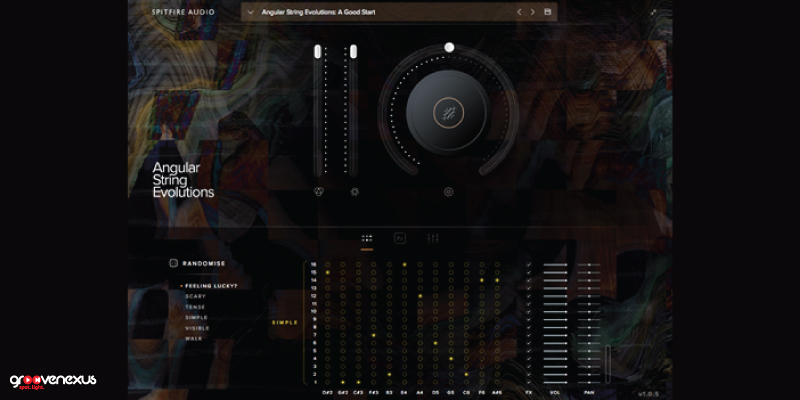
Free Collection
The Spitfire audio labs strings series of the virtual instruments is a Spitfire audio free collection that keeps on growing and currently consists of 13 different tools: Dulcimer, Scary Strings, Modular Piano, Peel Guitar, Frozen Strings, Synth Pads, Choir, Charango, Electric Piano, Amplified Cello Quartet, Drums, Soft Piano, and Strings. These instruments share a straightforward tree control interface. While user control is restricted, these instruments still sound amazing. You can think that each of these sounds is tweaked a little before they are ready to go. And not to forget, the cost is still zero, so you should check these out to see what they offer and if it fulfils your requirements perfectly.
Conclusion
These instruments are only the 15 best Spitfire audio libraries/instruments. Still, the Spitfire audio libraries have many more tools to experience yourself on the Spitfire audio app. The quality is even more extraordinary in all these sounds, and the content available is constantly growing in their catalog frequently. A significant reason for such remarkable success of Spitfire audio is the collaborations with different composers, sound engineers and designers, and the music producers who made the sounds. The knack for experimentation is what dominates the underlying philosophy of the Spitfire music approach.



